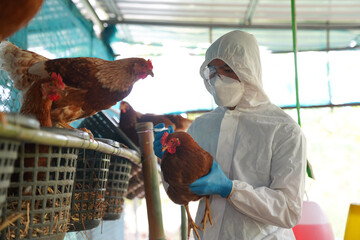The fatality rate of bird flu has hit 48% in human beings after another death was reported. As of August, there have been 76 human cases and two deaths in five countries in the Americas, according to the organization. There have been 990 patients and 475 deaths across 25 countries, for a fatality rate of 48 percent.
Health experts, along with the Pan American Health Organization, are concerned about increased numbers of human infections. The virus is continuing to mutate and could present a problem as it changes to more easily infect mammals, including humans.
“In recent years, there has been an increase in the detection of A(H5N1) viruses in non-avian species worldwide, including terrestrial and marine mammals, both wild and domestic (companion and production),” the Pan American Health Organization (PAHO) report said.
Vaccine development at a Texas facility began back in June.
A Biosecure Facility in Texas is Creating Bird Flu Vaccines For Humans
In the meantime, the USDA’s (United States Department of Agriculture) Animal and Plant Health Inspection Service (APHIS) has reported dozens of new avian flu detections in flocks of wild waterfowl in several states. The virus easily jumps from wild birds to domesticated flocks, as well as dairy cattle, according to a report by Food Safety News.
APHIS announced H5N1 avian flu identifications in several states, including mallard ducks in New Hampshire; black vultures in Indiana, Kentucky, Utah, and West Virginia; Canada geese and a turkey vulture in Utah; a bald eagle and mallard in Wisconsin; and an unidentified type of goose in Washington state. – Food Safety News
Bird flu has slipped out of the news cycle for several months, but it seems to be slowly seeping back.
Mainstream Media Warns Bird Flu Is “Quietly” Getting “Scarier”
A total of 19 countries and territories in the Americas Region reported 5,063 outbreaks of avian influenza (in domestic flocks) to WOAH,” PAHO added.
The U.S. has culled millions of birds in an attempt to stop the spread of the bird flu.
Dr. Meryl Nass: Culling Poultry in Response to Bird Flu is a Failed Strategy and Should Cease


